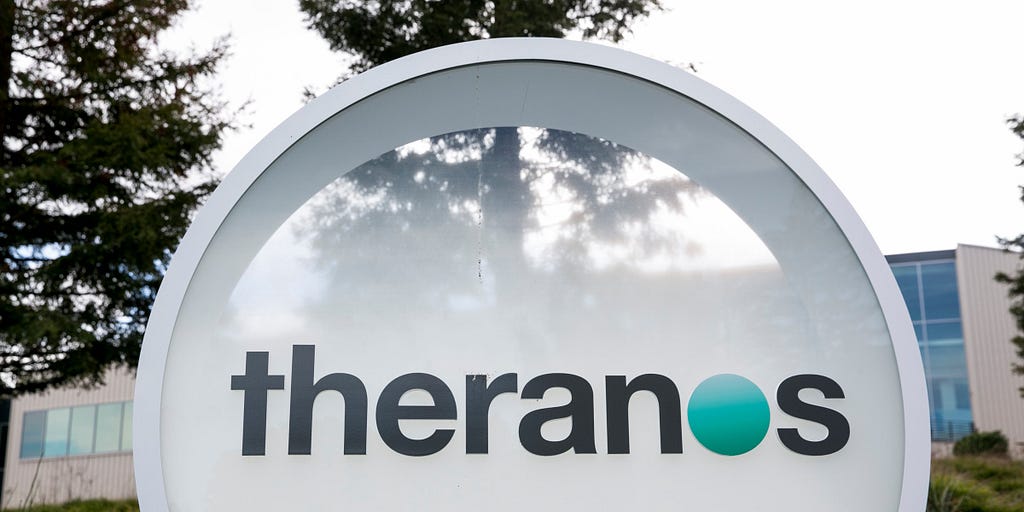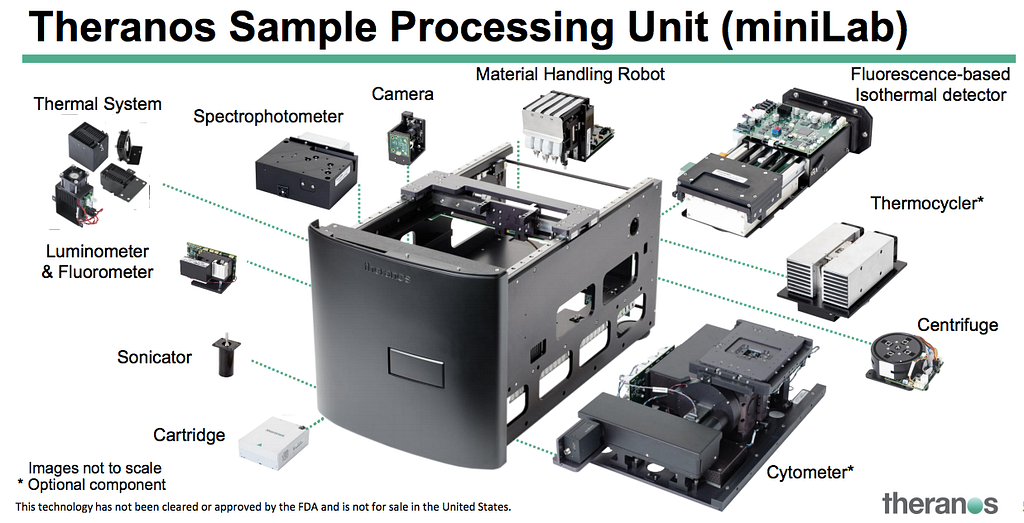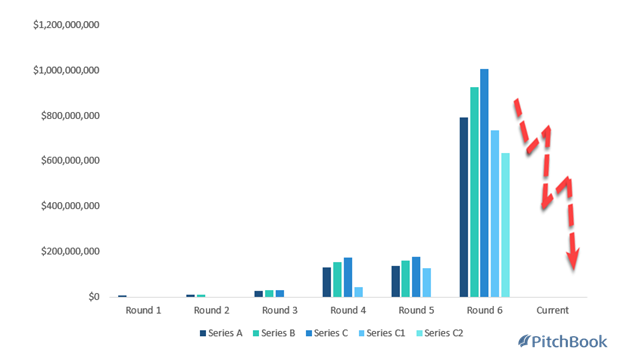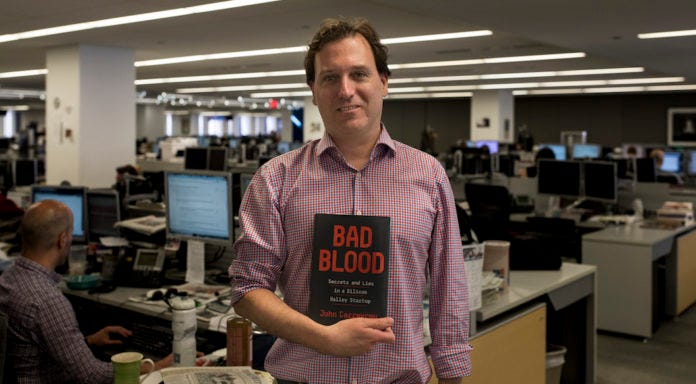Theranos — Silicon Valley’s Greatest Startup Disaster.

Imagine building a company that could have changed the whole world but instead ending up as one of the biggest frauds in the history of silicon valley. In 2015 Theranos dominated the headlines when John Carreyrou’s shattering report first broke.
How did Theranos start off?

“Theranos” was a company founded by Stanford dropout Elizabeth Holmes in 2003 using her tuition money. They received $700 million in funding in the process just by fooling everyone. What was presented out of theranos is they were supposed to revolutionize blood testing. A machine that could run hundreds of tests just from a finger prick in the comfort of your own home. While existing technology needed one vessel of blood for each diagnostic test conducted, Theranos affirmed to be able to perform hundreds of tests (seemingly over 240) ranging from cholesterol levels to complex genetic analysis, with just a single pinprick of blood. Automated, fast and inexpensive, Theranos appeared to be offering technology that could restructure medicine and save lives all over the world. Having raised over $700m in investment from the likes of Larry Ellison and Tim Draper, the company had become the rising star of Silicon Valley and was valued at over $9 billion, while Holmes, with a share of more than half that, was prefigured as the female Steve Jobs.
What was Theranos supposed to do?

When Elizabeth was 18 she went on a Stanford run tour in China, where she met Sunny aka Ramesh Balwani. He had what Elizabeth was looking for, money, the entrepreneurship spirit and the status of an entrepreneur. Sunny immigrated from Pakistan and had some success in the dot com boom in 1999 pocketing $40m in the process. Sunny played a big role in the booming of Elizabeth’s company. She also witnessed the SARS outbreak and wanted to do something about it. She was working on a patent idea, the idea was to create a wearable patch that could continually test the blood of the wearer and admit the right dose of medicine in real-time. Fueled with determination she dropped out of Stanford at the age of 19 and started her own company. When it came to investors who were into medicine, she struggled to convince them as her lack of knowledge was starting to show because you see, it’s not like Mark Zuckerberg and other tech entrepreneurs where you just master coding from an early age. On the contrary, Medicine and Chemistry required decades of knowledge and research to find a breakthrough. Regardless, by the end of the year, Elizabeth had nearly $6m in funding and her idea had changed. Now, the blood testing would be done by a cartridge and reader system. Here’s how it’s supposed to work — patients would prick their fingers storing blood in a small cartridge, putting this cartridge into a machine that would run the test on the spot and beam information from the internet to a lab where personnel would interpret the results and send back the report. Whereas, traditionally it was the syringe way and physically send the sample to a lab. It wasn’t as efficient. It took days to interpret reports and sending them back to the patients. Theranos planned to scout down the whole process into a machine the size of a personal computer. They were going to make the process faster, smoother and accurate to completely bypass the need for a doctor.


The only problem? The technology didn’t work.

It was John Carreyrou, twice-Pulitzer-prize-winning journalist of The Wall Street Journal who first broke the story in 2015. Having obtained a tip skeptical of the performance of the Theranos technology, John’s interest was set off further by Holmes’s claimed ability to invent ground-breaking medical technology after just two semesters of chemical engineering classes at Stanford.
There were several issues with the machine, the components would interfere with each other when placed in close proximity due to a magnitude of problems including heat, light and electrical activity. Next, to have a sufficient volume of test samples from only a pinprick on a finger, the drops of blood had to be diluted. Over diluted samples gave inaccurate results was outside detection capability of the hardware. It was called The Edison. Elizabeth pushed the engineering team manager to make the Edison development around 24/7 when the manager refused to state that the engineers were overworked as it is Elizabeth hired a parallel engineering team and pitted the two teams against each other in the survival of the fittest race. This kind of thing was actually a tactic that Steve Jobs also performed with the original Mac and the iPhone but in Theranos’s case, the losing team would be fired. Elizabeth also did some ethically questionable things such as running a pilot test with the company Pfizer. She knew that the product didn’t work yet but insisted on running real tests on people that had serious illnesses. To highlight how serious this was blood tests were basically used to measure how much medication dosage a patient should receive or conditions that required immediate actions. Doctors used lab results to base their 70% decisions on the patient. If the results were false, it could be fatal. Of course, how the cancer tests were approved was by Elizabeth lying to the investors on how well the product actually worked. The same year, the company’s Chief Financial Officer discovered that Elizabeth had been lying to the investors and he told her to stop instead the CFO was fired and a new CFO was never hired, leaving the position vacant for a decade.
Despite intimidation and threats of legal action, former Theranos employees Erika Cheung and Tyler Schultz, whose Grandfather George Schultz was a member of the Theranos board, began sharing their experiences of the company, its technology and implementations with John. They revealed lies to board members, a culture of intimidation and secrecy, a technology that repeatedly failed quality assurance tests and obligatory, results sent to real patients that were fundamentally erroneous, upon which life-changing medical decisions were being made. It would seem that the company had been built on nothing more than presumptuous lies.
The End of Theranos.

Thanks to the information from Theranos whistleblowers, John was able to bring out his report in The Wall Street Journal, revealing that Theranos was not using its own technology to run the majority of its tests due to the inefficiency of its own technology. FDA investigations ensued and all that was written in John’s report was proven correct.
The reaction from Theranos was astonishing. At first, Holmes ragingly denied the claims made against her and the company. Theranos even threatened to sue John himself who became a perceived enemy to the company, with some Theranos employees even chanting ‘Fuck you Carreyrou’.
Theranos — Silicon Valley’s Greatest Startup Disaster. was originally published in The Capital on Medium, where people are continuing the conversation by highlighting and responding to this story.